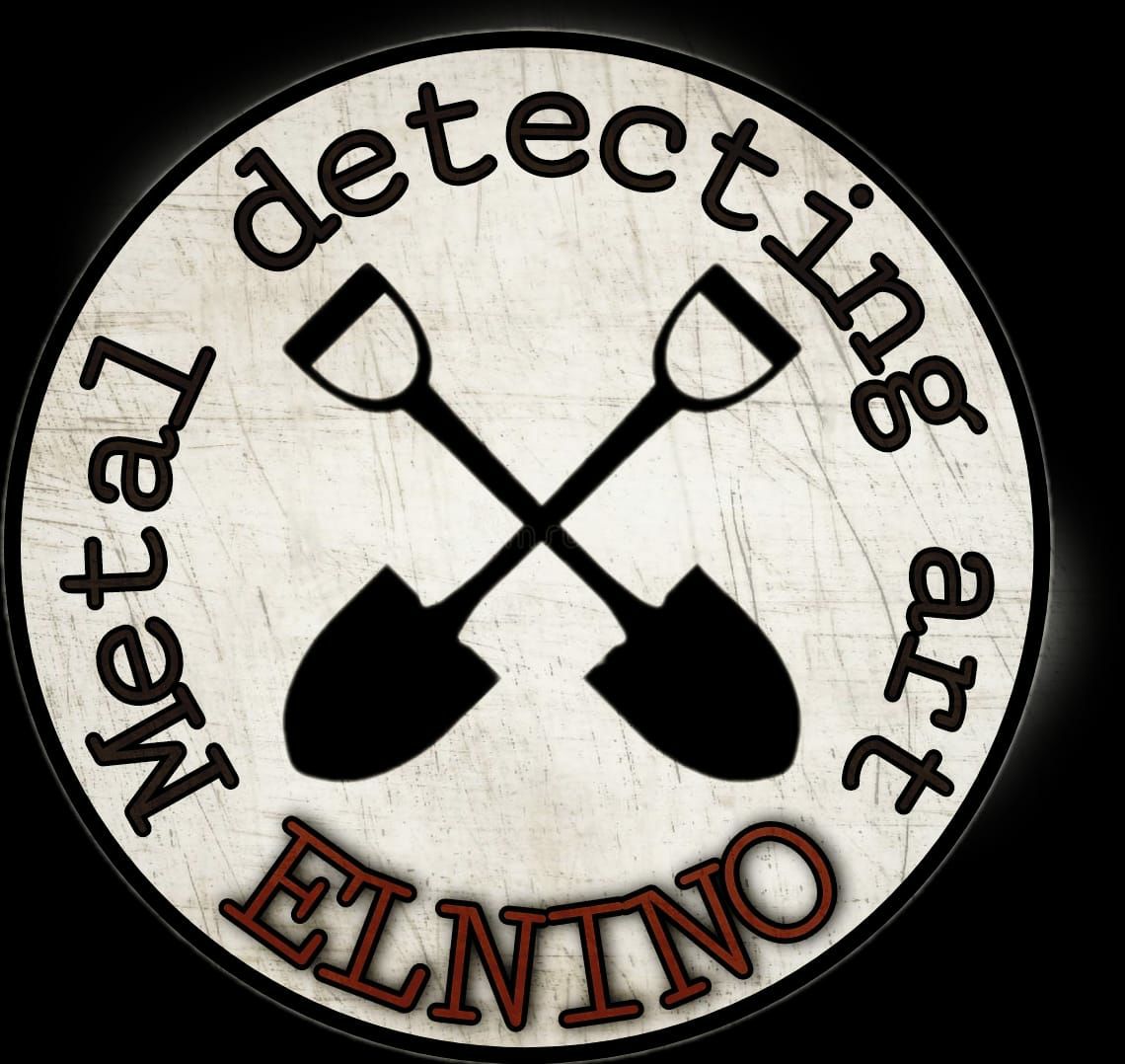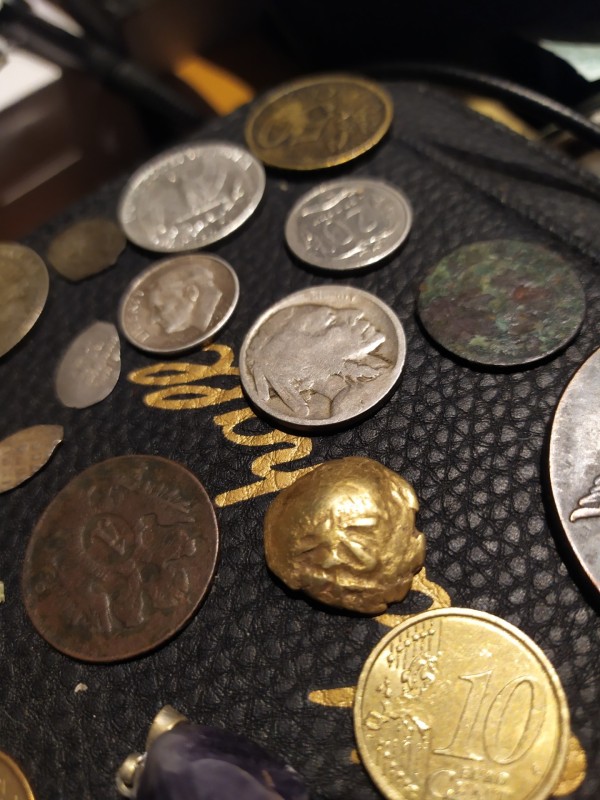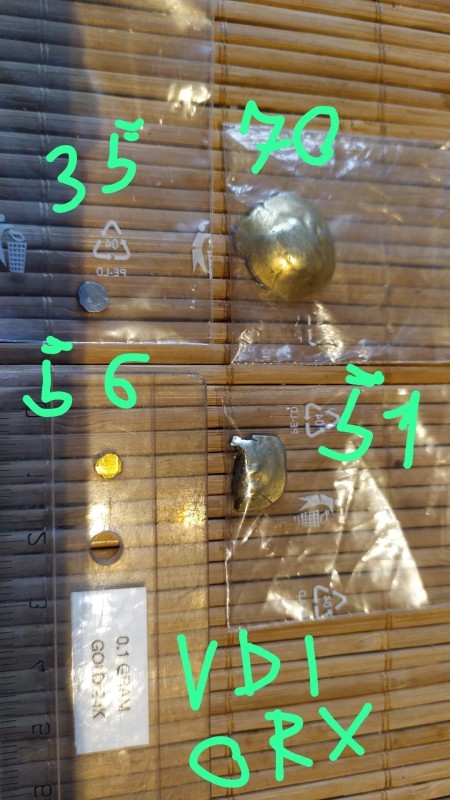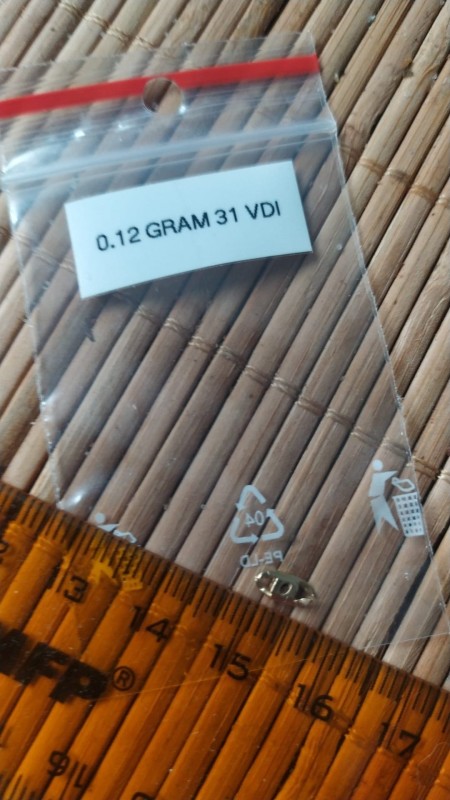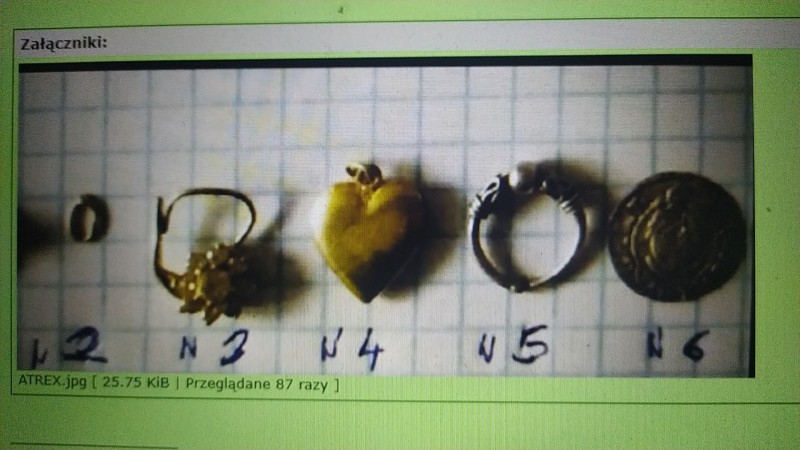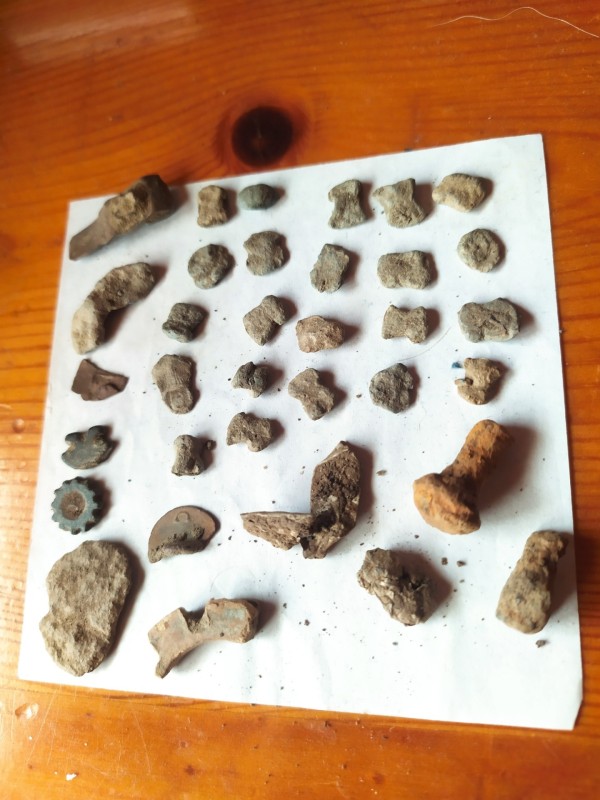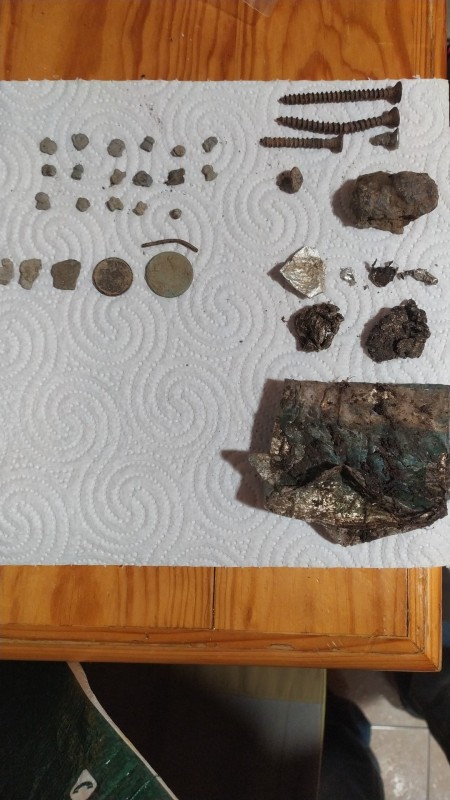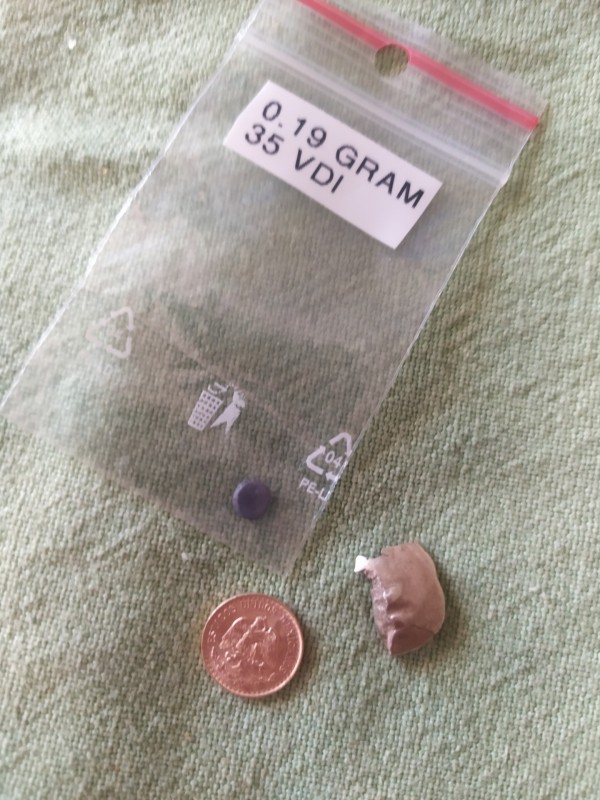-
Posts
1,337 -
Joined
-
Last visited
Content Type
Forums
Detector Prospector Home
Detector Database
Downloads
Everything posted by EL NINO77
-

Aftermarket F75 Coils?
EL NINO77 replied to Muddydogz's topic in First Texas - Bounty Hunter, Fisher & Teknetics
In my opinion, the Nel hunter is closer to the 11" DD Fisher, and if you want a more significant change, I would go for the 13" DD Ultimate... because of that, I have a good ratio between the size and weight of the coil for its size.. Nel Super Fly 11x 12" can also be a good coil because it is light for its size..but I have no experience with it... 13" ultimate has been on the market for years, and it's a really proven coil, I have it on several of my detectors... -
....I think that the dream and target of every detectorist is to find and detect a coin or object that would include all 4 mentioned properties... Rarity, Value, Aesthetics, and Sentiment... In my opinion, it's a perfect find.... have I found something like this? maybe yes... it certainly moved me to achieve other challenging finds in the future..... However, the practice is that some of the findings can have only 1, 2 or 3 of the 4 listed value attributes... Every detectorist has his own scale or level of findings that he would like to find, and that is often the case, that another good finding... can move us further... in detection... The value of a coin depends on many factors, and it is often true that the age of the coin itself and the number of mintages do not always determine the relatively greatest value of the object..because marketing around the value of different coins is a special thing and is often subject to various temporal and other changes. and sometimes it is very relative... I think that in this hobby...-detection, it's a good thing that you have a chance to find something nice as well as valuable... Sometimes it can also be time well spent in good detection.. ...
-

Latest Deus 1 Improvements?
EL NINO77 replied to Gold Dust Ernie Jr's topic in Metal Detector Advice & Comparisons
In the Goldfield program, you do not need a silencer,, because this program uses discrimination of the IAR type,,, and when this program is intended for searching for gold, you do not need other types of discrimination.. ORX vs Deus1 ... according to the experience of my colleague, ORX in the gold program can handle mineralized terrain a little better than Deus1 in the Goldfield program... Let's not forget that the ORX electronics are somewhat newer and have been optimized for *Hf white coils... so that may have its reasons... -
I'm glad that you solved it...,, because ATX outside can really work at high sensitivity..
-
The ratio of Performance, Possibilities and Price will be important...,,but the most important thing is that Garret goes ahead ... this shows that he really thinks important about the production of detectors...
-
Now I'm curious about New Garrett.....
-
First of all, check the batteries,,, for example with a battery tester, are they all in order....and have the correct voltage...,, this can be the cause of less stability of ATX...
-
Even though there is a comparison of AXIOM from several detectors..- maybe it's good if I post it here because it complements Andrew's previous Video Axiom ... on the same targets...
-

Thoughts And Prayers For Cpt Ghostlight
EL NINO77 replied to walkerrj's topic in Detector Prospector Forum
I wish him a speedy recovery...,, and a return to full health.... and I believe that soon he can also return to detection...Good HEALTH...CPT -
Both tone and pitch audio have their advantages
-
Every new find in an old place is a pleasure,,,and if it can be used as a gift, it will be a double pleasure... Congratulations JCR...👍
-
I think I will transfer older threads,, as continuing and current,, the good thing about the New Dankowski forum is the possibility to easily insert pictures ... so it will move the Forum to a higher level..
-
Jeff I think you did well to post your in depth tests of *AXIOM, and GPX and Deus2/Manticore... I believe that all the participants of the discussion would get the same results of the test...if they were done in your field conditions.... Different terrains bring different deep results and that's a fact... that cannot be refuted... on the contrary, even in easy terrain, you can come across a place of old settlement, civilization .... where a lot of ceramics, coal, and remnants of iron corrosion can extremely,, change and greatly reduce the detection conditions... for VLF detectors... this is an area that I am very interested in..., because there detectors can still find targets that are masked by such mineralization of the terrain.... I think that a significant feature of PI detectors is the ability to work effectively even on ethereally mineralized terrain, where VLf detectors lose strength and advantages as well as stability of detection... there are simply situations where the PI detector will always be the best.... comparing PI detectors and VLF detectors is like comparing apples and pears...it's never the same.... as the owner of a PI ATX in which I see a strong detection potential... I'm very glad... that Garret made an Axiom that performed very well in tests... and competes with PI Minelab detectors... and in my opinion it can be even better than slightly larger coils will be available for him.../14-18"/.. And VLF detectors? ...of course it doesn't matter, they are constantly improving "so that they work well even in more demanding mineralization conditions...and that is also a good thing.. A good thing for all of us...who like detection... as for the range of the detectors for a 5-gram coin... in the near future, I will be able to make some comparisons on such targets on different mineralized terrains... since we now have several different mineralized...test fields...
- 25 replies
-
- minelab gpx
- garrett axiom
-
(and 1 more)
Tagged with:
-

Has Anyone Used The Nexus Mp V3c For Nugget Hunting?
EL NINO77 replied to jawbone's topic in Detector Prospector Forum
I'll say it this way that detectors can definitely be a certain benchmark for the possibility of detection in mineralization.. and thus also an indicator of the limit of detection in such a difficult environment.. The detection possibilities of various detectors can only be assessed by those who in their environment are able to compare several of the best mineralization detectors side by side...on their mineralized terrain...in tests...but also in practical detection... Fortunately, the development of the electronics of VLF detectors,..as well as the development of their software is moving forward..and the deep possibilities in extra mineralization continue to improve. and I'm glad to be a part of it... Rick... will be interesting to watch the Nexus MP V3 ..with CC 24 khz coils how it does on gold in such conditions... -
I saw on YT how someone removed the chip from the Vanquish coil, modified the chip and connected the coil to the Equinox... coil worked.. Then I was even so interested that I bought another small V8 coil for the Vanquih... for a similar modification... In the end, I did not proceed with the modification of this coil... because I had other priorities...
-
If you are in the right place, a digital detector with a good range can very easily beat ... an analog or digital detector without VDI display... I have been dealing with this topic for several years, also because I prefer to use digital detectors from VDI Identifications. First of all.. it is a very selective detection where we want to detect the correct targets in one place... and at the same time dig up a minimal amount of non-ferrous waste... I always take this feature into consideration with every detector I use... Skull Diver,,congratulations too on finding 3 nice rings...
- 31 replies
-
- problems
- jewelry detecting
-
(and 1 more)
Tagged with:
-
With CTX, it is worthwhile to use channel 10-11 for greater CTX sensitivity to smaller or finer targets... the difference in detection is visible,,,
- 31 replies
-
- problems
- jewelry detecting
-
(and 1 more)
Tagged with:
-
On objects of the ring type, the eddy currents are very well concentrated around the circumference of the ring - and therefore such an object can obtain slightly better detection properties than a coin of the same diameter. Regarding the dispersion of VDI numbers, other things are important, such as the purity of the gold, as well as the size and shape...
- 31 replies
-
- problems
- jewelry detecting
-
(and 1 more)
Tagged with:
-
*New test VERSA from Iffy Signals ..
-
Jeff ..Rutus detectors have a very smooth True all metal mode...in multi-frequency mode..Dual mode .,,.,,,,, so it is not a problem to hit the finest targets,,, in the pictures, I only document what VERSA is capable of on multi-frequency, if you focus on selective ...detection of targets from ID 7-11 from among iron...on an old stone road... .. On my test field, I have a gold 0.05 gram gold segment buried at a depth of 10 cm in a low mineralized subsoil... if the detector can hit this target...in discrimination mode, it is a powerful detector.. Target /N.2/0.05 gram Gold in 10 cm depth .. on my test field... ______________________________________________________________________________________________________ Rutus ATREX ... Rutus *Atrex on multi-frequency program Coin the first target is 0.05 grams of gold, at a depth of 10 cm /marked yellow/ the second target ... is 50 euro cents per 37 cm,/ not marked/ the third target is a copy /0.19 grams of lead/ of a very small 5 mm coin 1/24/stater at a depth of 11 cm../marked Red/
-
VERSA in Multifrequency low conductor even in dynamic mode is really sensitive to small targets - the photo shows what I dig when I focus on detecting targets with low VDI 6-11... VERSA program Park - Multi F low conductor ------------------------------------------------------------------------------------------ VERSA Program Park 1 F- 40 khz VERSA 1F 40khz
-
Thanks Chase,,,I will try to register again...👍
-
Also, still...I can't log in..with my password..on the new.. Dankowski forum..
-
In selective detection, it depends on which zone of the VDI target I am focusing on,,,and accordingly I use a detector that has these properties that I require.. There are many detectors that are very good at detection..but only some have the required range of VDI in the zones that I need to use. .. XP Even though *VDI has a range of more than a hundred numbers.. its VDI zone on very low-conductivity non-ferrous targets starts at +28VDI .. and then rises very quickly.. to a very high VDI.. so the zone of low-conductivity targets is expanded .. even if practically, we have a range of all non-ferrous targets somewhere between +28 and +99VDI, which is a total of 71 VDI numbers for non-ferrous targets.
- 31 replies
-
- problems
- jewelry detecting
-
(and 1 more)
Tagged with:
-
Very good insights Jeff, Simon and Andrew... The Force 1500 may not be the best PI in the world... but it can be the best PI Detector in terms of Price / Performance.. In my opinion, there are more people who would like to buy a powerful PI detector, but they are always deterred by the high price of such PI detectors, which are 3000 to 7000 dollars/euros... - Here the PI Force1500 with a price range of 1500-1800 dollars appears as a detector that is already affordable for them.. because it is that in the prices of powerful VLF detectors /Manticore or Deus 2/... I myself once bought a second-hand PI Garrett ATX for 1300 euros, so it was an affordable investment in a powerful PI detector.

